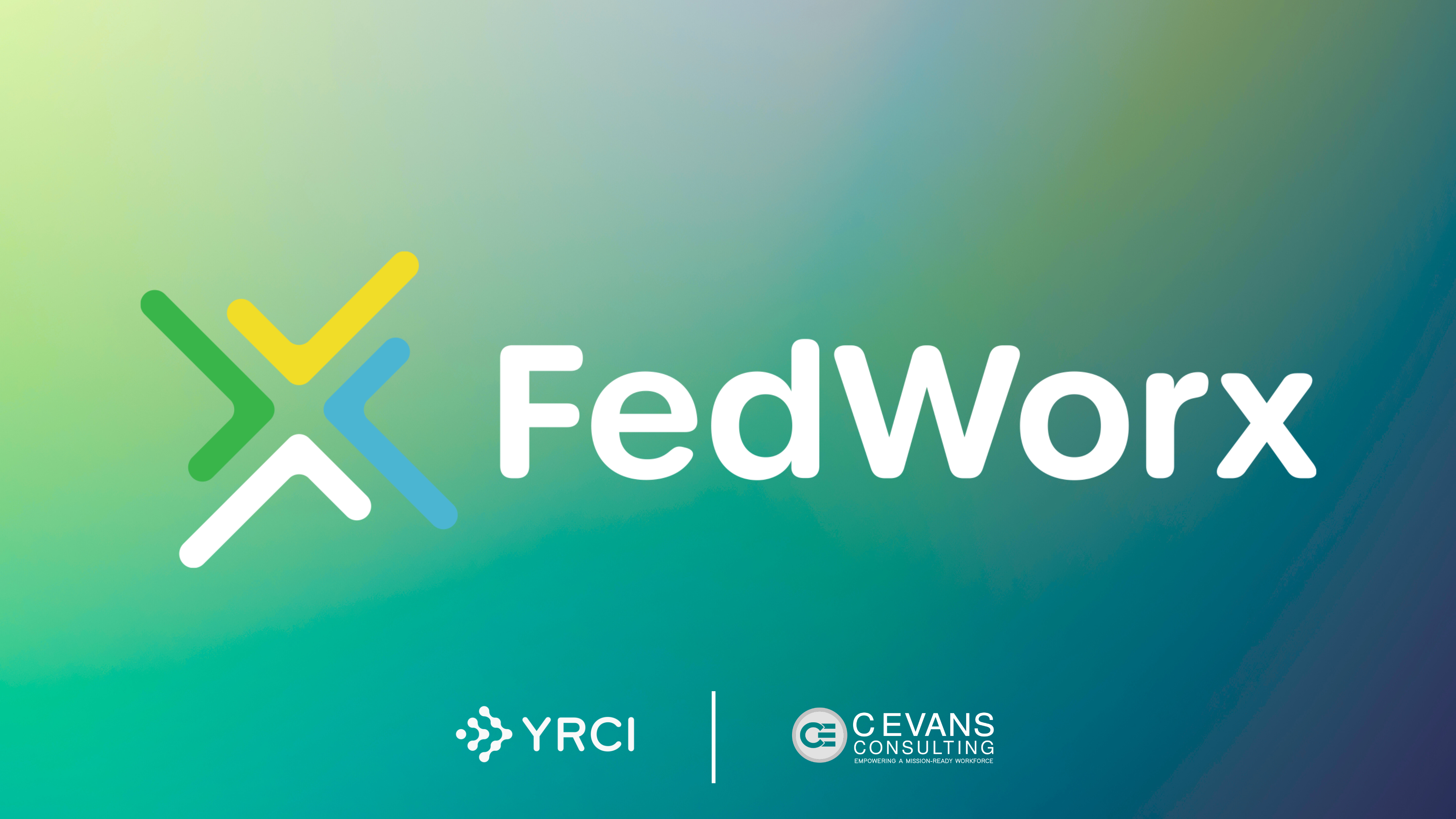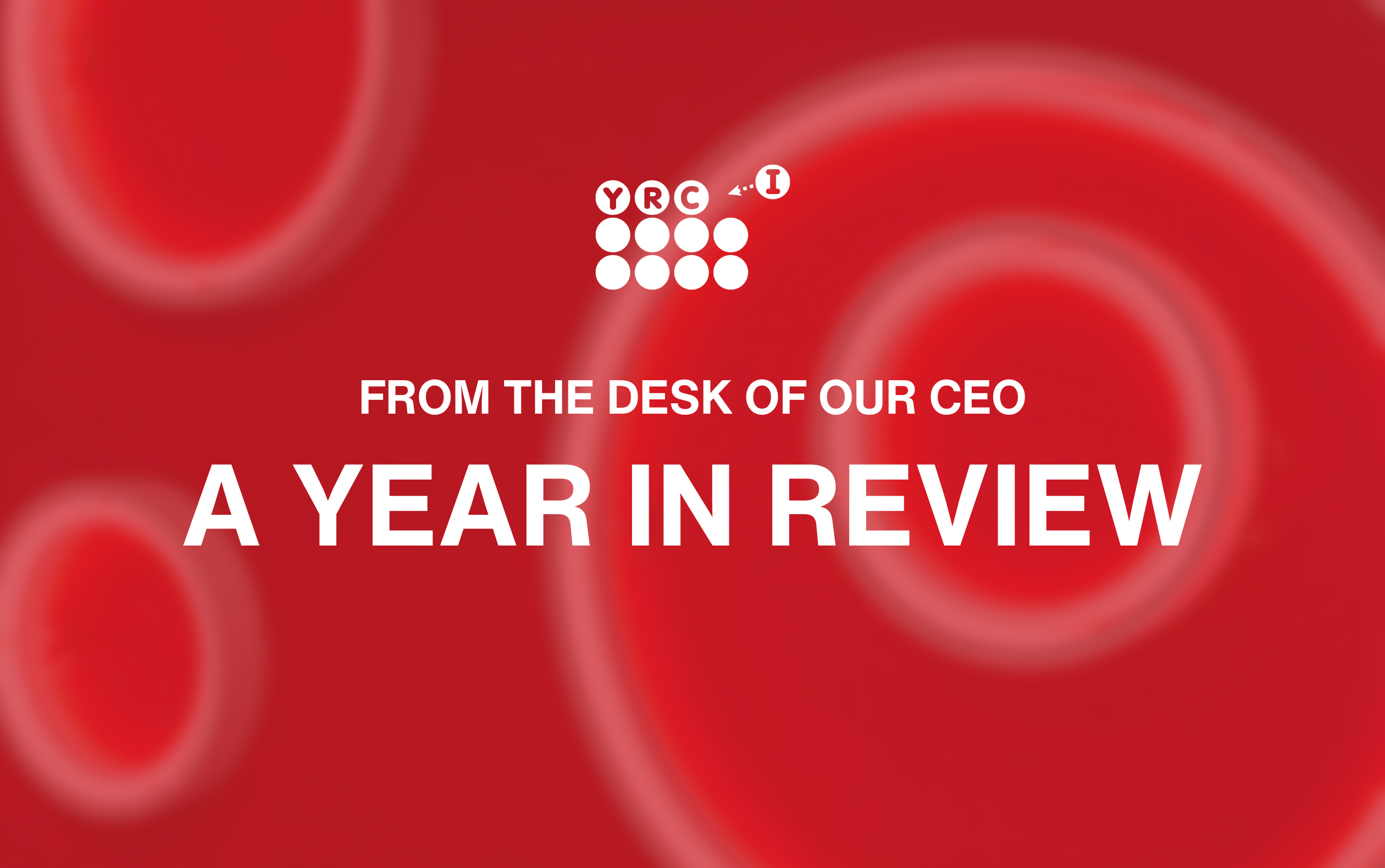-
Solutions
Our Solutions
-
Thought leadership in human capital excellence.
-
Empowering missions through human capital excellence.
-
Driving digital transformation for federal agencies.
-
A well-trained workforce is the backbone of federal excellence.
 YRCI and C Evans Consulting Launch FedWorx Joint Venture
YRCI and C Evans Consulting Launch FedWorx Joint Venture- Company
 YRCI has appointed Ronna Rowe Garrett as Senior Vice President of Client Relations and Strategy, David Spinale as Senior Vice President of Operations, and welcomed Max Wyche as Director of Human Capital Business Development & Client Engagement.
YRCI has appointed Ronna Rowe Garrett as Senior Vice President of Client Relations and Strategy, David Spinale as Senior Vice President of Operations, and welcomed Max Wyche as Director of Human Capital Business Development & Client Engagement.- Careers
Careers-
YRCI believes that human capital drives mission success.
-
Purpose-driven opportunity to be part of the backbone of government…
 The US experienced two devastating hurricanes this year, leaving many towns along the East Coast underwater and in ruins.
The US experienced two devastating hurricanes this year, leaving many towns along the East Coast underwater and in ruins.How Low-Code/No-Code Tools Bridge the Gap Between Developers and Federal Stakeholders

-
December 2024
Federal agencies have a unique opportunity to bridge the gap between technical and non-technical staff by utilizing low-code/no-code platforms. These tools empower individuals without extensive programming skills to contribute to projects, enhancing collaboration and improving overall project outcomes. By fostering an inclusive environment where both technical and non-technical team members can work together seamlessly, agencies can accelerate project development, streamline workflows, and ultimately deliver better services to the public. Embracing low-code/no-code platforms boosts efficiency and allows agencies to respond swiftly to citizens’ needs, transforming service delivery. By simplifying the development process, these platforms enable quick deployment of solutions addressing pressing public concerns without the lengthy timelines associated with traditional software development. This agility is crucial in situations requiring rapid response, such as public health emergencies or natural disasters.
Utilizing these platforms democratizes technology within agencies, allowing a wider range of staff to contribute their insights and expertise, leading to more well-rounded solutions. Additionally, the cost-effectiveness of low-code/no-code tools enables agencies to allocate resources intelligently, ensuring the efficient use of taxpayer money while delivering high-quality services. In this post, we will delve deeper into what low-code/no-code development entails for government organizations, explore its key features, and highlight the numerous benefits it can bring to teams aiming to maximize their efficiency and effectiveness.
What is Low-Code/No-Code Development?
Low-code/no-code platforms represent a modern approach to app development that allows users to create applications with little to no coding required. This innovative methodology is particularly beneficial in environments where developers are under pressure to deliver a greater number of applications within tighter deadlines and with limited resources. By utilizing visual interfaces and drag-and-drop features, these platforms enable users, including those without extensive programming knowledge, to contribute to the development process.
Additionally, low-code/no-code platforms facilitate reduced development times, as they streamline workflows and eliminate much of the manual coding traditionally associated with app creation. This efficiency not only accelerates the delivery of applications but also increases collaboration among team members, allowing for more diverse input and creativity in the design and functionality of apps. As businesses strive to adapt to rapidly changing market demands, leveraging these platforms can be a game changer in meeting user needs quickly and effectively.
How Do Low-Code/No-Code Platforms Work?
Low-code/no-code platforms operate by abstracting traditional coding languages like Python, Java, or C#, which typically require significant programming knowledge. Instead of writing code line by line, users can utilize a user-friendly visual interface to create applications. This interface allows them to drag and drop elements, define relationships between objects, and set parameters through simple configurations. By leveraging pre-built components and templates, even those without technical expertise can design, modify, and deploy applications quickly and efficiently. This democratization of app development streamlines processes, enabling rapid prototyping and promoting innovation across various industries.
The Benefits of Low-Code/No-Code Platforms
Accelerated Service Delivery
One of the most significant advantages of low-code/no-code development is the remarkable reduction in time to market, which is especially beneficial for federal agencies facing pressure to deliver services promptly. These innovative solutions provide reusable application components and intuitive drag-and-drop functionalities, empowering organizations to be more agile in their approach. This means that when feedback from stakeholders is received, teams can implement changes almost instantaneously, streamlining the overall development process. Furthermore, low-code and no-code platforms can automate various tasks, such as workflows, testing, and data integration, which are traditionally tedious and time-consuming parts of the development life cycle. By alleviating these burdens, organizations can focus on delivering high-quality products faster than ever before, enabling rapid development and deployment of applications that allow agencies to respond swiftly to changing needs and emergency situations. This agility is crucial in times of crisis, such as natural disasters or public health emergencies, where timely access to information and services is paramount.
Enhanced Data Management and Analysis
These platforms facilitate better data management and analysis, enabling federal agencies to handle large volumes of data more efficiently. Agencies can create custom applications that streamline data collection and reporting processes, leading to improved decision-making based on real-time insights. By harnessing data effectively, agencies can enhance transparency and accountability, fostering public trust.
Improved Citizen Engagement
Utilizing low-code/no-code tools, federal agencies can develop user-friendly applications that enhance citizen engagement. These solutions allow for interactive platforms where citizens can submit requests, provide feedback, or access vital services with ease. By improving the user experience, agencies can create stronger relationships with the communities they serve, leading to increased participation and satisfaction.
Cost-Effective Resource Allocation
Federal budgets often face constraints, and low-code/no-code platforms can present a cost-effective solution. By reducing the need for extensive coding and large development teams, agencies can allocate their resources more efficiently. This not only helps manage budgets but also allows more funds to be directed towards critical public services.
Agility in Compliance and Policy Implementation
In an environment characterized by frequent policy changes and regulatory updates, low-code/no-code platforms provide federal agencies with the flexibility to adapt quickly. Agencies can easily modify applications to comply with new regulations or policies, ensuring that they remain aligned with government standards and guidelines without extensive overhauls.
Collaboration and Empowerment of Non-Technical Users
Low-code/no-code development platforms significantly enhance collaboration among team members and stakeholders while standardizing the development process. In traditional app development, developers often face pressure to deliver functional products, which can create a disconnect with stakeholders’ actual needs. This disconnect may result in assumptions about what stakeholders want, leading to misaligned expectations. However, low-code/no-code solutions offer a visual interface that makes the development process more transparent. Stakeholders can actively participate, providing real-time feedback and monitoring progress, giving a better understanding of project goals and ensuring the final product aligns closely with their vision.
Moreover, these platforms empower non-technical team members, such as business analysts and marketers, to build applications themselves. This inclusivity taps into diverse insights and creativity, empowering innovation and generating applications that better meet user needs. Ultimately, this collaborative and empowering approach leads to greater satisfaction and success for all involved.
The Future of Development
Low-code/no-code solutions are rapidly emerging as the future of application development, revolutionizing the way software is created and deployed. These platforms offer significant advantages, including drastically reduced development times and enhanced collaboration among teams, making them particularly appealing to companies and startups eager to innovate quickly.
With the increasing demand for agility, low-code/no-code solutions are also proving invaluable for government organizations. They enable them to respond swiftly to changing requirements and streamline their operations. By simplifying the development process, these tools empower individuals with varying levels of technical expertise to contribute to app creation, fostering a culture of innovation and creativity.
If you’re interested in discovering more about how we leverage low-code/no-code solutions to drive innovation within the federal government space, contact Colin Waitt, Director of Business Development, at [email protected]. Our expertise in this area can help you navigate the complexities of digital transformation effectively.
Further readings:
Five Key Benefits of No-Code Platforms for Enterprises
Pros and cons of no-code development
-







